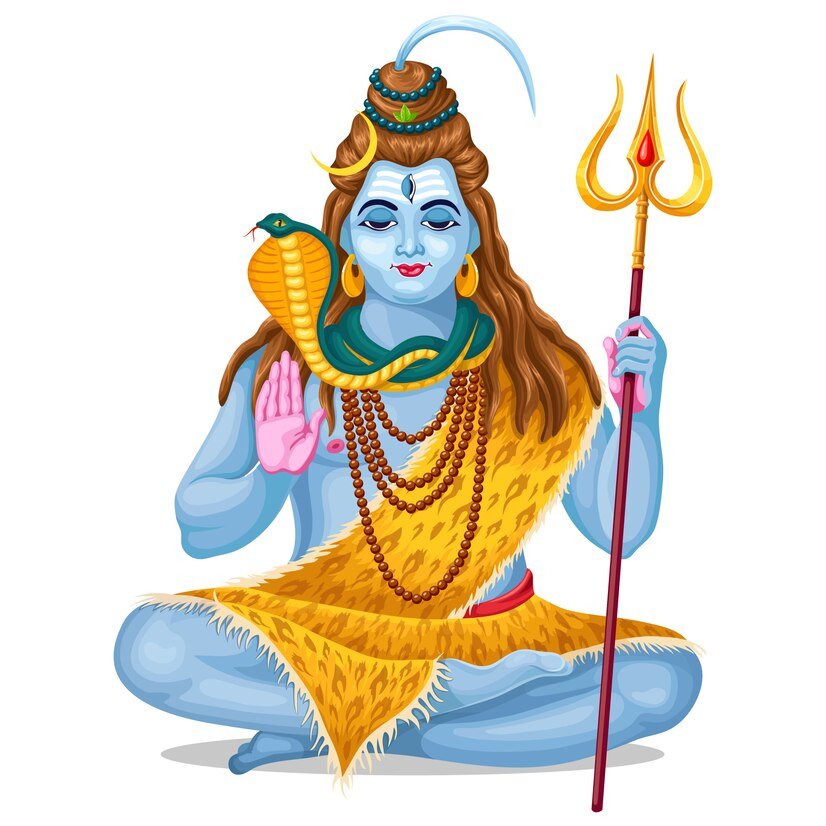
Introduction – Lord Shiva
In the vast tapestry of Hinduism, the figure of Shiva stands as a profound and multifaceted deity, embodying both creation and destruction. This article delves into the depths of Shiva’s significance, elucidating the nuances that make him a central and revered entity in Hindu theology.
Lord Shiva Origins and Iconography
Tracing the Roots
Shiva’s origins can be traced back to the ancient Vedic texts, where he is revered as the supreme cosmic force. As Rudra, the fierce storm god, his early depictions highlight the dual nature of creation and destruction, symbolizing the cyclical rhythm of the universe.
Symbolic Imagery
The iconography is rich and symbolic. His blue throat, a result of consuming the cosmic poison during the churning of the ocean, symbolizes his self-sacrifice for the greater good. The serpent coiled around his neck represents his mastery over time, while the crescent moon adorning his hair signifies the passage of time.
Lord Shiva’s Roles: Creator, Preserver, Destroyer
The Cosmic Dance
Shiva’s cosmic dance, known as the Tandava, embodies the eternal cycles of creation, preservation, and destruction. This dynamic dance form is a visual representation of the perpetual flow of energy within the universe.
Preserver of Balance
As the preserver, Shiva maintains cosmic balance. His consort, Parvati, represents the feminine aspect of divine energy, illustrating the harmonious interplay between male and female forces in the cosmic order.
Lord Shiva in Hindu Scriptures
Rigveda and Shiva
The Rigveda extols Shiva as Rudra, the howler and roarer, highlighting his fierce and awe-inspiring nature. The hymns within this ancient scripture emphasize his role as both a benevolent healer and a formidable destroyer.
Puranas and Mythological Narratives
Delving into the Puranas reveals captivating mythological narratives that further enrich the understanding of Shiva’s diverse attributes. From slaying demons to nurturing wisdom, these tales showcase the deity’s multifaceted persona.
Worship and Rituals
Linga Worship
Central to Shiva worship is the veneration of the linga, a symbolic representation of his cosmic energy. Devotees engage in rituals like Abhishekam, the ceremonial pouring of milk and water over the linga, to invoke blessings and divine favor.
Maha Shivaratri
Maha Shivaratri, the Great Night of Shiva, is a prominent Hindu festival dedicated to honoring Lord Shiva. Devotees observe fasting, engage in prayer, and participate in night-long vigils to seek divine blessings.
Shiva Beyond Borders
Global Influence
The mystique of Shiva transcends geographical boundaries, captivating followers worldwide. From the sacred temples of Varanasi to modern yoga studios in the West, Shiva’s influence continues to resonate across diverse cultures.
Conclusion
In conclusion, this article provides a comprehensive exploration of Shiva, weaving together the threads of mythology, symbolism, and worship that define his profound presence in Hinduism. As we unravel the layers of Shiva’s persona, we gain a deeper appreciation for the intricate tapestry of beliefs and practices that surround this enigmatic deity.



